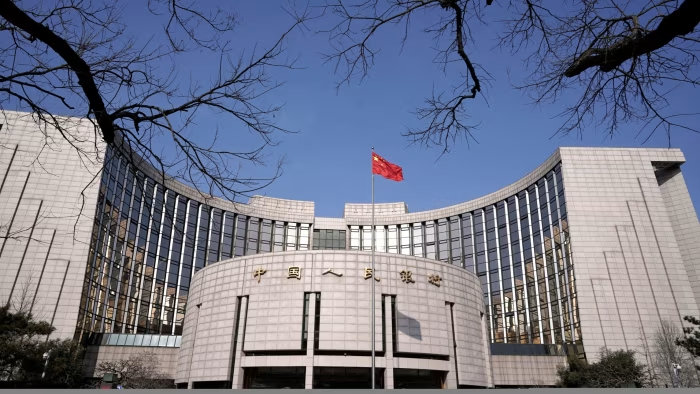China’s central bank has opted for cautious measures, refraining from interest rate cuts and pulling back a significant amount of cash from its financial system. This move signals a strategic approach by the People’s Bank of China (PBOC) to maintain stability while keeping options open for future action, especially as trade tensions with the United States loom.
The PBOC kept the one-year medium-term lending facility (MLF) rate steady at 2%, aligning with market expectations. Nine out of ten economists surveyed by Bloomberg had predicted this decision, reflecting the central bank’s cautious stance.
This marks a contrast to its earlier commitment to “moderately loose” monetary policy, announced earlier this month, which was the first policy shift of its kind in 14 years.

The PBOC withdrew a net 1.15 trillion yuan ($158 billion) from the financial system through the MLF, the largest withdrawal since 2014. This action underscores the central bank’s focus on managing liquidity without flooding the market with excess cash.
READ ALSO: Bloody Christmas in Ukraine: Russia Unleashes Devastating Attacks on Cities
At the same time, the PBOC injected 300 billion yuan via MLF loans while allowing 1.45 trillion yuan worth of loans to mature in December, marking the fifth consecutive month of net liquidity withdrawal. A report by Financial News, a PBOC-backed outlet, clarified that the reduction in policy loans was due to sufficient liquidity in the market.
The central bank has gradually shifted its focus from the MLF rate to the seven-day reverse repo rate as a primary tool to guide borrowing costs. This rate has remained unchanged since a 20-basis-point cut in September, signaling stability in short-term market conditions.

Additionally, the PBOC has introduced other tools to manage liquidity and smooth out potential volatility, especially in the event of large-scale MLF loan maturities. Last month, the central bank injected 1 trillion yuan into the market through outright reverse repurchase agreements and government bond purchases, further bolstering liquidity.
Ming Ming, chief economist at Citic Securities Co., predicts a 40–50 basis point cut in 2025, with the possibility of a reserve requirement ratio reduction for banks as early as the end of this year.
These expectations have driven China’s benchmark sovereign bond yields to historic lows, with the yield on 10-year government bonds dipping to 1.73%. This reflects investor confidence in upcoming monetary easing to support the economy.
BLOOMBERG

